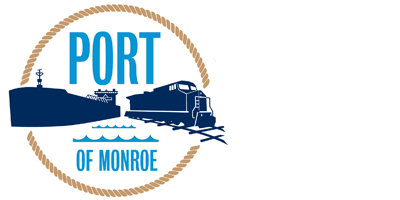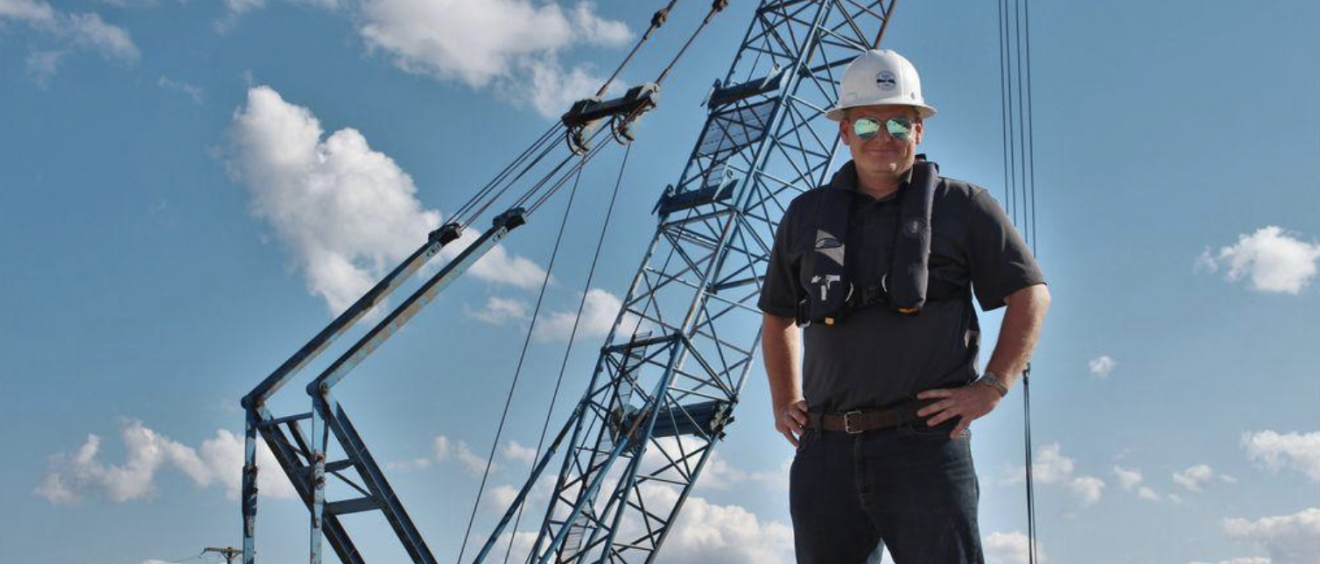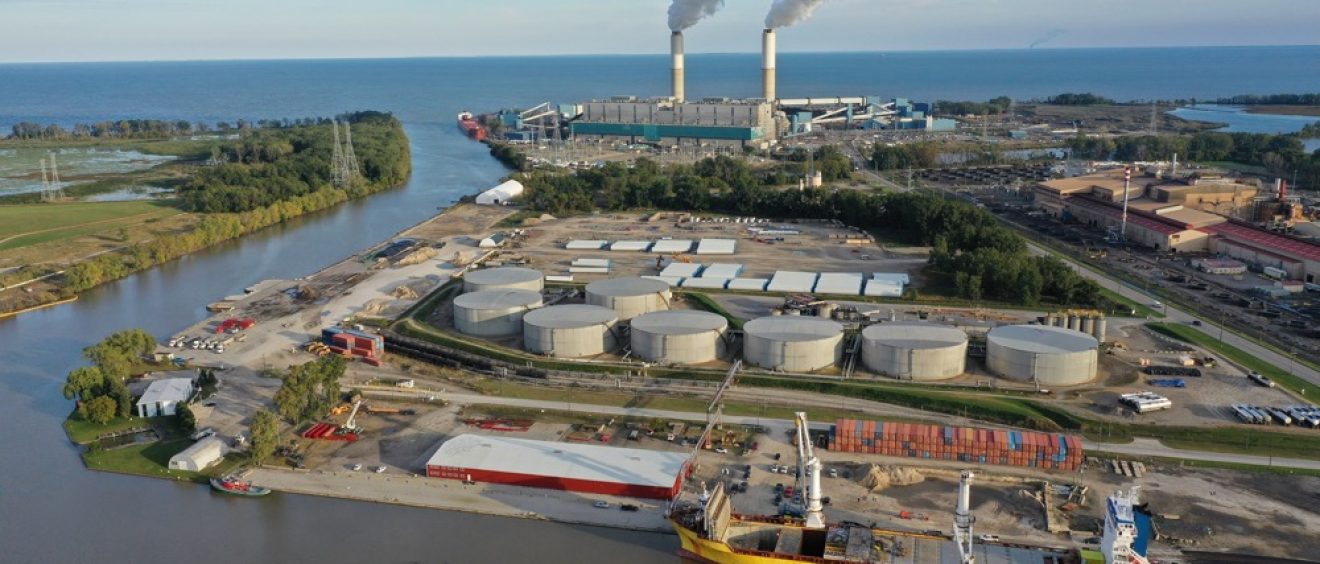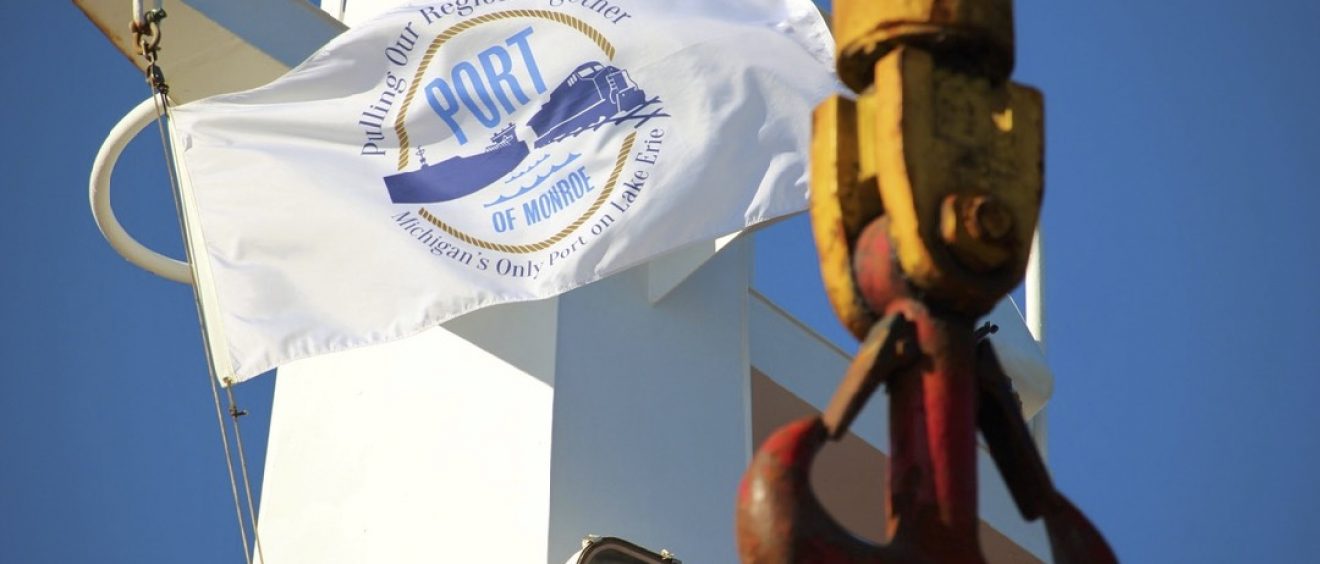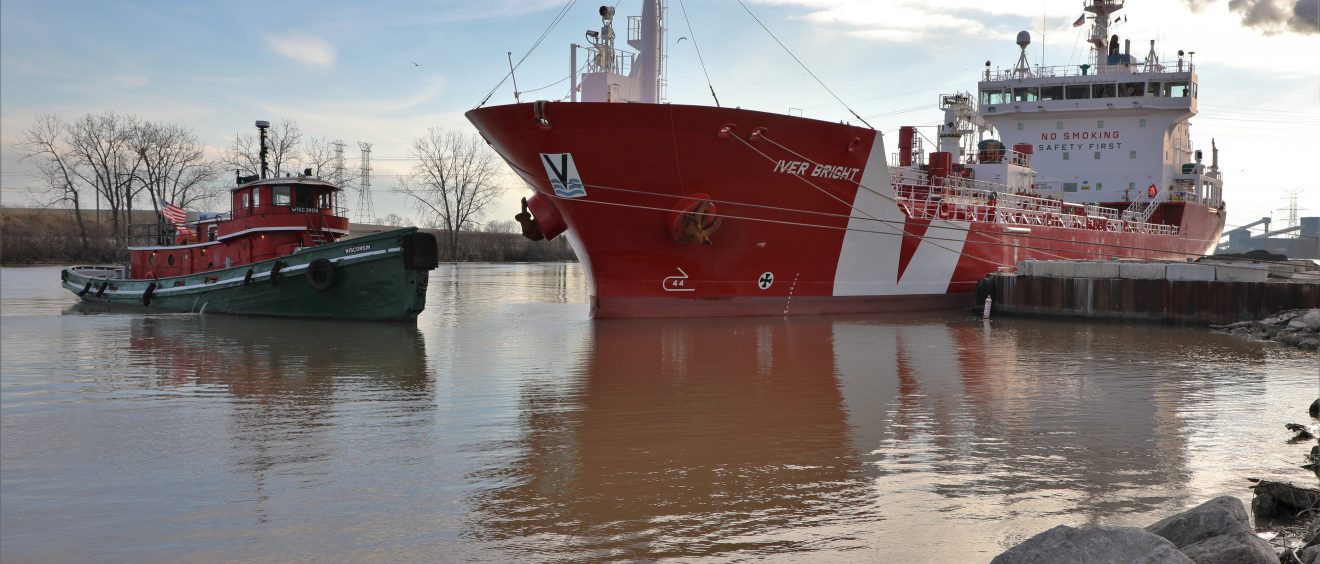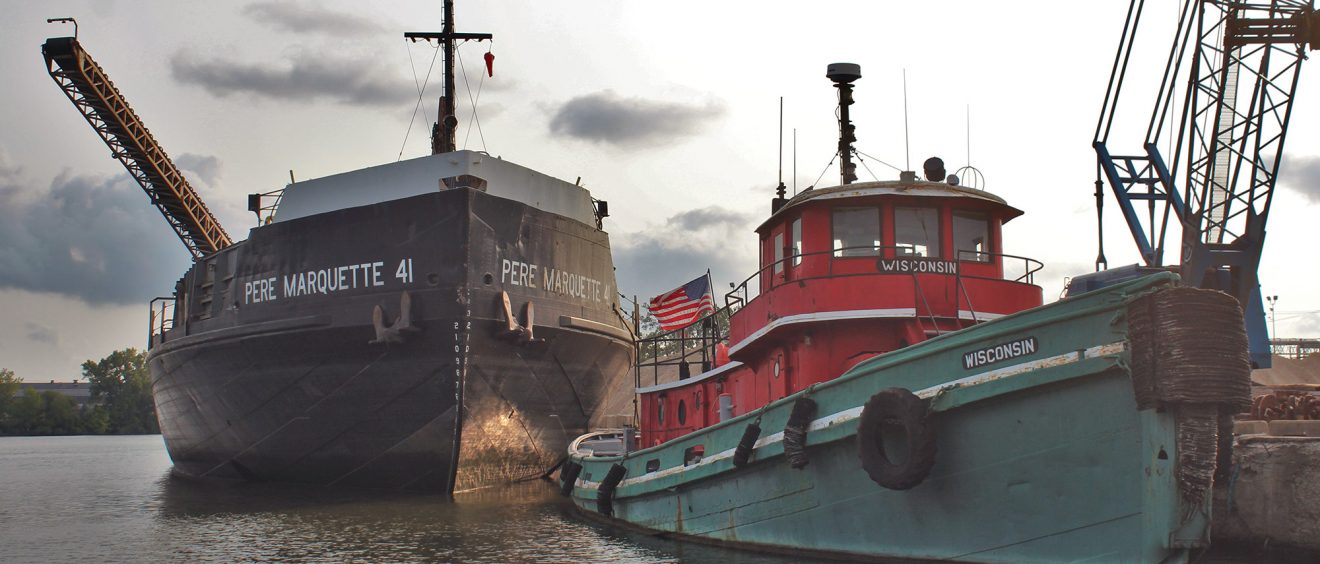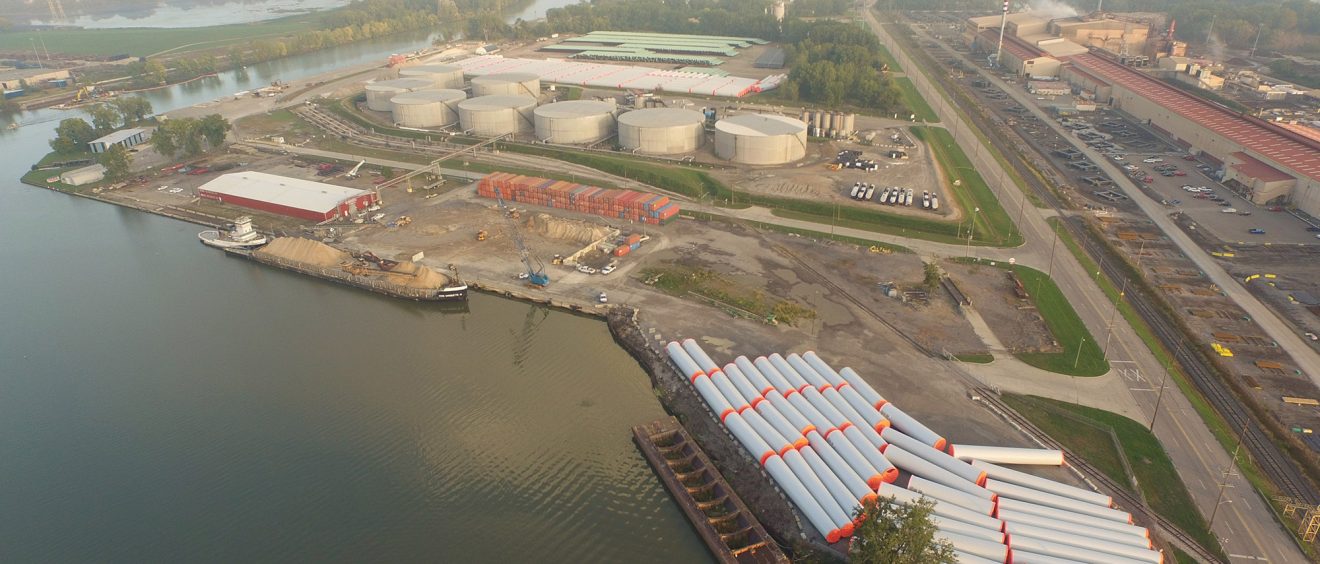Port of Monroe builds efficient, cost-effective transportation hub through public-private partnerships
Source: Great Lakes Seaway Review
Written By: Janenne Irene Pung
Port building is happening, with cargo up about 40 percent from 2016 to 2017, and the 2018 increase in overall tonnage expected to range between 30 to 40 percent.
The first port in the Great Lakes to be accepted into the U.S. Customs and Border Protection program (CBP). The first port in Michigan to receive state funding for commercial dock improvements. The first and only Great Lakes public agency to take over managing and marketing cargo.
These are a few of the results Michigan’s Port of Monroe is experiencing from efforts to build a port from nearly the ground up. For 30 years, the port was run by a public commission. There was no director and much of the port’s 600 acres was leased for non-cargo purposes. Dredging had been insufficient and the dock wall was in disrepair.
It all began to change when Paul LaMarre III was hired as Port Director in 2012. He set about “reclaiming land in the wild west.” With regional support, he began an aggressive approach to improving port infrastructure and boosting cargo through innovative public-private partnerships (P3). “Since hiring Paul, the port has be- come an operational asset important to industry. We had drifted away from what a true port operation is,” said City of Monroe Mayor Robert Clark. “His leadership and experience has gotten us to where we are today, which is evidenced by our getting the Pacesetter Award three of the last five years.”
The Robert J. Lewis Pacesetter Awards are given by the Saint Lawrence Seaway Development Corporation to U.S. ports registering increases in international cargo tonnage. During the 2018 presentation in July, Deputy Administrator Craig Middlebrook made the following points:
The Port of Monroe saw a 123 percent increase in international cargo tonnage moving through the Montreal-Lake Ontario section of the Seaway compared to the 2016 season. Highlighting their activities last season, the port paired with Spliethoff Lines, handling the majority of components for Michigan’s largest construction project in 2017—the Arauco Fiberboard Plant in Grayling, Michigan.
The port also constructed a new Riverfront Dock with $4 million in state funding, adding to its capabilities.
“I know we will continue to see big things happening at Monroe,” Middlebrook said when presenting the award.
Recruiting and investing. When LaMarre joined the city-run port, he knew he needed to build a team to make the level of impact he planned. Grassroots efforts began with inspiring city and county officials. He enlisted a seasoned entrepreneur, Tony Gray, as his terminal operator. At nearly 70, Gray continues as President of DRM Management and keeps step with LaMarre’s relentless march forward.
Monroe County and the Port of Monroe sit in the epicenter of a growing logistics cluster made up of Southeast Michigan, Northwest Ohio and Southwest Ontario.
“When I sat down with Paul and listened to his vision, I saw the fit,” said Gray, who admits he enjoys a challenge. “When seeing our ability to grow this business, I wondered how many people get an opportunity to develop a port. I saw it as a chance to build something long-term for my employees.”
Through creative negotiations that could extend 30 years, DRM began investing in the port. It helped finance dredging, partnered in negotiations with DTE Energy to maximize the partnership, created more laydown space, constructed an indoor storage facility and purchased the big equipment needed for oversized and heavy-haul cargo, like the wind turbine components and a natural gas pipeline.
Over five years, DRM’s investments are approaching $4 million. “It sounds like a lot of money, but it goes quickly,” Gray said, noting how the indoor storage building represents a quarter of the investment. As money is spent, contracts are won and expenditures recovered. Port building is happening, with cargo up about 40 percent from 2016 to 2017, and the 2018 increase in overall tonnage expected to range between 30 to 40 percent.
“As one project leaves, another comes through the door,” Gray said. “We’ve been very lucky.” Ideas become contracts. One area of gain serves as an example of P3 innovation. When renegotiating the contract with DTE Energy, LaMarre reclaimed 60 crucial acres along the water and assumed management and marketing of the coal plant’s byproduct, synthetic gypsum.

The acreage is now valuable, dockside laydown space. The synthetic gypsum is a sulfate material created as scrubbers clean the plant’s exhaust from burning coal to provide power for the region. The byproduct is a harmless compound used to make building products, such as drywall, cement and plaster. For years, the utility had been paying a trucking company to
haul the gypsum to a wallboard company.
LaMarre now moves up to 600,000 tons of gypsum annually across the docks, much of it being barged to Port Colborne, Ontario. It is then sold to companies like USG, Georgia Pacific and LaFarge to create building materials. More recently, the port has added the plant’s fly ash to a similar agreement, creating a market and moving an additional 80,000 tons a year. According to Port of Monroe Commission Chair Dale Bose, this is exactly what the commission values about the port’s approach to business development—a commitment to working with local companies on win-win solutions.
While the deal may sound like it was wrapped up with a good idea and a conversation, it began with LaMarre commissioning a study with the University of Michigan, renegotiating a contract that reclaimed lakefront property, drumming up customers and passing the opportunity to the DRM team to create efficiencies in moving a sticky substance with nearly 8 percent moisture. With practice and the use of hoppers and rib belts, the team is loading the Pere Marquette in about four-and-a-half hours.
Growing companies. Like the area industries, DRM is partnering with the port in building its future, keeping 35 employees busy at the port. In addition to waterborne commerce, the terminal operator oversees rail and road cargo movements (see page 37 for the port’s intermodal amenities). And with two reach stackers and conveyor systems onsite, purchased to win contracts that have come and gone, the team is equipped for more containers, wind turbines and nearly any type of bulk and breakbulk.
“The community and the commercial industry always recognized we had road transportation with I-75 and the rails that go through the City of Monroe, but they didn’t always recognize how close it was to our waterborne transportation,” said City of Monroe Mayor Robert Clark. “They didn’t take advantage of it. Now, it’s clearly recognized.”
“Monroe County and the Port of Monroe sit in the epicenter of a growing logistics cluster made up of Southeast Michigan, Northwest Ohio and Southwest Ontario. That said, logistics-centered businesses, along with advanced manufacturing and agricultural processing, are target industries for the county in our attraction efforts,” said Tim Lake, President &
CEO of the Monroe County Business Development Corporation. “Being able to market water, rail and road—the three main modes of freight movement—is highly beneficial to the county. Even when a company may not require direct port access, knowing it’s available close by assists us in landing a project.”
“The port went from being a liability to an asset,” Brose said. Partnering with CBP. Last season, the port began contracted shipments of containers coming from Europe. An official interpretation of how containers are classified for inspection disrupted the service.
Monroe is also developing an International Maritime Container Operation.
The contract involved components for constructing the $400 million Arauco Manufacturing facility in Grayling, Michigan. While the port staged the inbound domestic and international marine shipments, some of the cargo had to be diverted to Cleveland for customs clearance. Through discussions and meetings, LaMarre was determined to find a resolution—a critical step in being able to build the port’s cargo base. He and the commission envision the port as a gateway for international traffic, a market being targeted for business.
As a result, he applied for and became the first port in the Great Lakes accepted into the CBP Reimbursable Service Program. He joins the ranks of companies like DuPont, The Home Depot, Jacksonville Port Authority and Royal Caribbean Cruises, which are among the selectees.
The program is designed to help customers receive the services they need amid record increases in passenger and cargo volumes, which are outpacing CBP personnel. The shortage is causing cargo backups. The program creates a partnership between CBP, private sector and government entities, allowing CBP to provide additional inspection services upon stakeholders’ requests. Those seeking services essentially pay for them above their tax base, covering the salaries and expenses of up to five full-time officers.
“In the first three years of the program, CBP has entered into over 60 agreements, providing more than 368,000 additional processing hours at the request of our partners—accounting for the processing of more than 8 million travelers and over 1.1 million personal and commercial vehicles,” according to CBP. In outlining its needs, the Port of Monroe cited CBP’s clearance of various inbound and outbound international bulk and breakbulk cargoes. Those cargoes include the synthetic gypsum and fly ash from DTE Energy and salt crossing the docks.
Monroe is also developing an International Maritime Container Operation. With completion of a $5.4 million public investment in the dock, the port plans to introduce regularly scheduled liner service(s), similar to what’s in place in Cleveland, Ohio. The Monroe team is already providing office space for a representative of Spliethoff, the European based company moving scheduled cargo through the Cleveland-Europe Express.
“The project is identified by the State of Michigan and U.S. Department of Transportation as a critical step in creating a premier Great Lakes cargo transportation center at the Port of Monroe,” LaMarre said.
The Port of Monroe proposes to ship and receive cargoes in traditional six-sided steel containers and various forms of breakbulk. The service will build on what’s happening in Cleveland, providing Spliethoff with another port option to move the boxed exports of regional companies. Because of draft, 150 40-foot containers can be moved per ship every other week, with the potential of becoming a weekly service.
CBP staff would travel the 35 miles from the Detroit Customs and Border Protection Marine Office to provide the inspections, according to LaMarre. The port would issue a request for services two hours prior to vessel discharge and continue for two hours after discharge. The service would also be needed for loading.
“There are more cargo opportunities out there,” LaMarre said. “It’s just a matter of identifying them.” Tug service and
ship repairs. Over the summer, the port entered into an exclusive partnership with The Great Lakes Towing Company in Cleveland
to serve as home base for the Wisconsin, the oldest active tug on the Great Lakes. The partnership also includes the towing company’s affiliate, Great Lakes Shipyard, moving a floating drydock to Monroe.The agreement is expected to allow for more responsive and efficient harbor assists, icebreaking and outside towing of cargo projects. Having a tug onsite will also lower costs.
As a result, the towing company hopes to gain marketshare. The Wisconsin was reassigned from the Port of Milwaukee, which had a three-tug grouping. She is now part of the Detroit-Toledo group operating for The Great Lakes Towing Company and her crew will rotate within that coverage area.
The change, at this time, does not require hiring additional crew or accruing extra expenses for the company that operates 30 tugs in 11 Great Lakes ports. “It’s a tight river and it makes sense,” said Joe Starck, President of The Great Lakes Towing Company and Great Lakes Shipyard.
The floating drydock—with its 300-ton capacity—is undergoing some upkeep before being moved to the port by tugs. It has been out of the water and not being used since the company purchased its 770-ton marine travelift. While the drydock will only service smaller boats, like research vessels, ferries and dinner boats, the partnership brings skilled ship repair people to the port to offer fabrication and repair for a variety of vessels. The port will seek winter layups of lakers and have the partnership in place for any work they may need.
As a deepwater port with 3,000 linear feet of improved dock space, extensive laydown area and centralized location on the Great Lakes, this new collaboration capitalizes upon strategic positioning, an underserved regional market and longstanding industry partnerships, according to the towing company.
“The goal for winter season is to get at least one major layup project,” Starck said, noting the company will initially send workers from Cleveland to work in Monroe until the business can support local employees. “We are going to grow our business as Monroe is a growth port. Paul has done an amazing job building the tonnage through that port and this is an opportunity for us to be part of that.”
“The team assembled here in Monroe is as compatible a public service team as I’ve seen in action,” Brose said, who worked in community development through MSU Extension for decades. “Paul is a natural at connecting and reacting. He’s intuitive to the commission’s needs and preferences. This has been the perfect storm in terms of bringing the right people together at the right time.”
With long hours and relentless speed, LaMarre considers his situation a privilege. He is supporting the region he calls home and the industry he loves. People are as important as the bottom line. Partnerships are a way of life. He is involved locally and at state and federal levels on behalf of the port and the Great Lakes/ Seaway shipping industry.
“I am here for the sustainability of the Great Lakes/Seaway system for the long haul,” he said.
